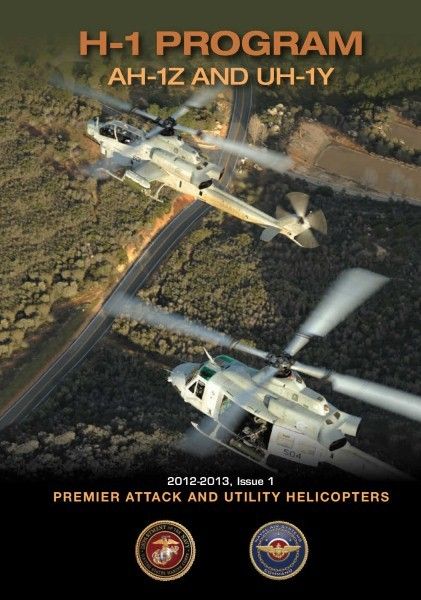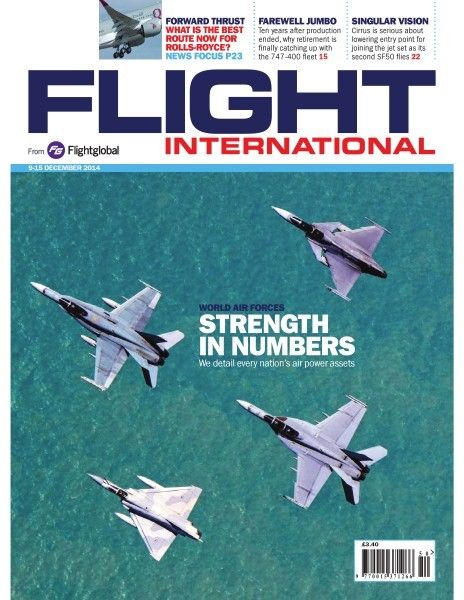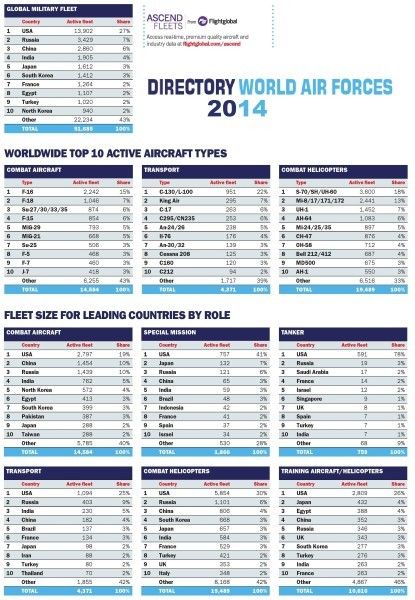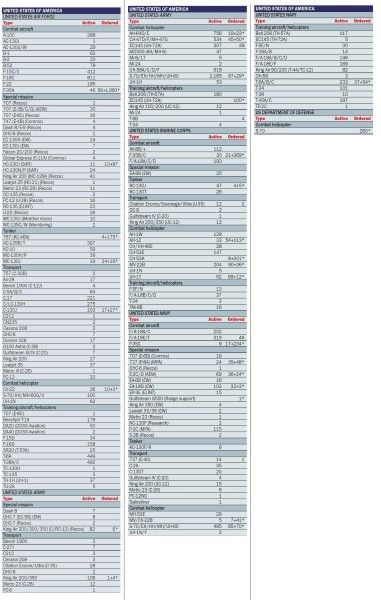
bajar el PDF... http://adf.ly/1UWRpC
que lo disfruten
agur









The Bell-Boeing V-22 Osprey is a multi-role combat and transport aircraft utilizing tilt-rotor technology to combine the vertical performance of a helicopter with the speed and range of a fixed-wing turboprop aircraft. With its engine nacelles and rotors in vertical position, the V-22 Osprey can take off, land and hover like a helicopter. When airborne, the engine nacelles can be rotated, thus converting the V-22 to a turboprop fixed-wing aircraft capable of high-speed and high-altitude flight. This unique feature allows the Osprey to fill an operational niche.
The V-22 Osprey is powered by two Rolls-Royce T406/AE 1107C-Liberty turboshaft engines, each rated at 6,150 shp. The V-22 has graphite/fiberglass rotor blades and a composite/metal airframe. By structural weight, the V-22 is 40% composite.
The V-22 can carry 24 combat troops, or up to 20,000 pounds (9,070 kg) of internal cargo or 15,000 pounds (6,800 kg) of external cargo. For ease-of-transport, the rotors fold and the wing rotates to minimize the space needed for storage. The Osprey is designed to fly 2,100 miles with one in-flight refueling, thus providing the advantage of a vertical and/or short takeoff and landing (V/STOL) aircraft that can rapidly self-deploy to any location in the world.
The Osprey comes in two main variants. The MV-22 is designed to meet the amphibious/vertical assault needs of the U.S. Marine Corps (USMC), the strike rescue needs of the U.S. Navy and long-range special operations forces (SOF). The CV-22 is designed to support missions of the U.S. Special Operations Command (USSOCOM). The USMC plans to purchase 408 MV-22s to perform combat assault and assault support missions. USSOCOM has a requirement for 50 CV-22s configured for terrain-following, low-level, high-speed flight for long range special operations. As of June 2012, more than 165 V-22 Ospreys were in operation with ten Marine Corps and two Air Force Special Operations Command (AFSOC) squadrons. As of September 30, 2014, there were 226 MV-22s and 38 CV-22s in service.
The V-22 originates from the U.S. Department of Defense (DoD) Joint-service Vertical take-off/landing Experimental (JVX) aircraft program launched in 1981. The Bell Helicopter-Boeing team was awarded a development contract in 1983. The JVX aircraft was designated V-22 Osprey in January 1985. The V-22 first flew on March 19, 1989; however, the complexity and difficulties of designing the Osprey led to many years of testing and developing the aircraft. From October 1992 until April 1993, Bell and Boeing redesigned the V-22 to reduce aircraft weight, simplify production and reduce manufacturing costs. The redesigned version became the V-22B model and flight tests resumed in June 1993. Development continued for years and was dogged by accidents and high costs. The DoD approved the V-22 Osprey for full-rate production on September 28, 2005. The USMC commenced crew training for the MV-22B in 2000 and fielded the aircraft in 2007. Together with the MH-60R Seahawk, the Osprey will eventually replace the Marine Corp's aging CH-46/HH-46 Sea Knight. The CV-22B was deployed in March 2006 and achieved Initial Operational Capability (IOC) in March 2009. The CV-22 replaced the MH-53 Pave Low, which was retired in September 2008.
In the production of the V-22 Osprey, Boeing Military Aircraft's Mobility Division is responsible for the fuselage, empennage, and all subsystems, digital avionics, and fly-by-wire flight-control systems. Bell Helicopter Textron provides the wing, transmissions, rotor systems, engine installation, and final assembly at its facility in Amarillo, Texas. MV-22B Block B and CV-22 Block 10 have the same propulsion system and share a 90% common airframe. The main differences are in the avionics systems.
Major V-22 subcontractors include BAE Systems (flight control system); General Dynamics (mission computer); Honeywell (Environmental Control System (ECS) and components, LWINS, VF generator, CDS, FDP, TCAS, SDC, IR suppressor, heat exchanger); Exelis (AN/ALQ-211(V)2 Countermeasures Set - CV-22 unique); Northrop Grumman (AN/AAQ-24(V) Directional Infrared Countermeasure (DIRCM) system - CV-22 Only; AN/APR-39D(V)2 Radar Warning Receiver (RWR) - MV-22 only); Raytheon (AN/AAQ-27A forward-looking infrared (FLIR) system - MV-22 only, MMR, AN/ASN-163 MAGR, mission planning, and maintenance system); Orbital ATK (AN/AAR-47 Missile Warning System); BAE Systems (AN/ALE-47 Countermeasure Dispenser System and AN/APX-123 Identification Friend or Foe (IFF) System); Rockwell Collins AN/ARN-147(V) VOR/ILS/GS/MB Receiver and AN/ARN-153 Tactical Airborne Navigation (TACAN) System); Rolls-Royce (T406/AE 1107 Engines); Moog (flight control actuators and vibration suppression actuators); Triumph Group-Vought Aircraft (empennage and fiber placement skins); and Elbit Systems (AN/AVS-7 ANVIS/HUD (Aviator's Night Vision System/Head-Up Display) system - MV-22 only).
In February 2011, the worldwide Osprey fleet surpassed the 100,000 total flight operating hour mark. With more than 250 V-22 Ospreys currently in service by the end of September 2014, the fleet has amassed more than 200,000 flying hours.
In April 2013, it was announced that Israel would become the first foreign operator of the V-22. However, in November 2014, Israel decided to cancel its planned purchase of six V-22s due to budgetary constraints. On November 21, 2014, Japan's defense ministry announced that it plans to buy the Osprey. Japan is reportedly interested in buying 20-40 aircraft. On May 5, 2015, the State Department approved a possible Foreign Military Sale (FMS) to Japan for 17 V-22B Block C Osprey aircraft and associated equipment, parts and logistical support at an estimated cost of $3 billion.
On June 13, 2013, Bell-Boeing announced it had been awarded a five-year contract valued at $6.5 billion for the production of 99 V-22s (92 MV-22 models and 7 CV-22 models).
The Navy plans to phase out its aging fleet of 35 Northrop Grumman C-2A Greyhounds in favor of the MV-22 for carrier onboard delivery (COD) missions. The COD mission involves the transportation of passengers and cargo to/from aircraft carriers. The Navy has decided to buy four tiltrotors annually from fiscal year 2018 to 2020.
Armament/Weapons: The V-22 Osprey can be equipped with a 7.62 mm M240 machine gun or a .50 caliber (12.7 mm) M2 Browning machine gun. Survivability issues in high-threat situations have created a need for better armament. Currently, CV-22 and MV-22 Ospreys are being retrofitted with the Interim Defensive Weapon System (IDWS) belly turret from BAE Systems housing a 3-barrel 7.62mm GAU-17 minigun.
Price/Unit Cost: In FY 2014 (last year of CV-22 procurement), the unit cost of the CV-22 was $69.22 million (flyaway cost). The airframe had a cost of $61.31 million and the cost of the two AE1107C engines was $4.50 million ($2.25 million each).
In FY 2015, the unit cost of the MV-22 is $71.92 million (flyaway cost). The airframe costs $64.25 million, electronics $1.38 million, and the two AE1107C engines cost $4.62 million ($2.31 million each).
Total Cost - Life of Program (LoP): The procurement cost of the V-22 program is $44.31 billion (estimated by the DoD) + $10.52 billion in research and development (RDT&E) funds, which means the total estimated program cost is $54.83 billion (numbers are aggregated annual funds spent over the life of the program and no price/inflation adjustment was made). This figure excludes military construction (MILCON) costs in support of the program in the amount of $111.8 million.
Mission/Role: The Navy/Marine Corps MV–22 performs combat assault and assault support missions, while the USSOCOM CV-22 is configured for terrain-following, low-level, high-speed flight for long range special operations.
FY 2015 DoD Program: Supports procurement of 19 MV-22 aircraft for the Navy/Marine Corps. The request is based on the third year of a follow-on 5-year multiyear procurement contract for FYs 2013 to 2017. FY 2014 was the last year of procurement for the Air Force-SOCOM CV-22. FY15 procurement funds in the amount of $1,787.2M have been provided the V-22 Program.
FY 2016 DoD Program: Supports procurement of 19 MV-22 aircraft for the Navy/Marine Corps. The request is based on the third year of a follow-on 5-year multiyear procurement contract for FYs 2013 to 2017. FY16 procurement funds in the amount of $1,690.7M have been provided the V-22 Program.
For more information, click to see the USAF FY 2016 CV-22 Budget and the Navy FY 2016 MV-22 Budget.
Sources: U.S. Department of Defense (DoD), Bell Helicopter, The Boeing Company,
Raytheon, and Rolls-Royce plc.
Specifications Armament DoD Spending FY2016 Budget
Boeing's V-22 Osprey Site: V-22 Osprey
Bell Helicopter's V-22 Osprey Site: V-22 Osprey
Rolls-Royce: T-406/AE 1107C Liberty Engine
Raytheon: AAQ-27A MWIR imaging system for MV-22
Total V-22 Program Cost:
$54.83 billion ($44.31B procurement + $10.52B RDT&E)
V-22 Procurement Objective:
460 aircraft (408x MV-22 & 50x CV-22 + 2 dev. aircraft)
V-22 Osprey Defense Budget Charts:
DoD Spending on the V-22 Osprey in FY 2012, FY 2013, FY 2014, FY 2015 and FY 2016
DoD Purchases of V-22 Osprey Aircraft in FY 2012, FY 2013, FY 2014, FY 2015 and FY 2016
Specifications
Aircraft Specifications: V-22 Osprey (CV-22 and MV-22)
Primary function: Airborne assault, vertical lift, combat search and rescue, and special operations
Prime Contractor: Bell Helicopter Textron and The Boeing Co.
Power Plant: 2x Rolls-Royce T406/AE1107C-Liberty turboshaft engines with 6,150 shp (each engine)
Wingspan: 84 ft 7 in (25.8 m)
Length: 57 ft 4 in (17.4 m)
Height: 22 ft 1 in (6.73 m)
Rotary Diameter: 38 ft (11.6 m)
Weight (Empty): 33,140 lb (15,032 kg)
Maximum Vertical Takeoff Weight: 52,600 lbs (23,860 kg)
Maximum Rolling Takeoff Weight: 60,500 lbs (27,443 kg)
Capacity: 24 troops (seated) / 12 litter patients / 32 troops (floor loaded) / 20,000 lbs (9,072 kg) internal cargo;
External Cargo: Single hook - 10,000 lbs (4,536 kg) of cargo; Dual hook - 15,000 lbs (6,804 kg) of cargo
Fuel Capacity: CV-22: 2,040 gallons (7,722 liters); MV-22: 1,448 gallons (5,481 liters) - figures are including aft sponson tank
Speed: Cruise: 241 kts/277 mph (446 km/h); Max: 275 kts/316 mph (509 km/h)
Rate of Climb: 2,320 ft/min (11.8 m/s)
Service Ceiling: 25,000 ft (7,620 m)
Range: 879 nm/1,012 miles (1,629 km)
Mission Radius: 430 nm/495 miles (796 km) for MV-22 with 24 troops and ramp mounted weapon system
Armament/Weapons: 1x 7.62 mm M240 machine gun or 1x .50 caliber (12.7 mm) M2 Browning machine gun
Currently, CV-22 and MV-22 Ospreys are being retrofitted with the Interim Defensive Weapon System (IDWS)
belly turret from BAE Systems housing a 3-barrel 7.62mm GAU-17 minigun.
Crew: Four (pilot, co-pilot and two enlisted flight engineers)
Price/Unit Cost:
CV-22: $69.22 million (in FY 2014)
MV-22: $71.92 million (in FY 2015)
First Flight: March 19, 1989
Deployed: CV-22: March 2006; Initial Operational Capability (IOC) in March 2007 (MV-22) / March 2009 (CV-22)
Inventory:
CV-22: 38 (as of September 2014) vs. 32 (as of September 2013)
MV-22: 226 (as of September 2014) vs. 192 (as of September 2013)
Avionics/Sensors/Countermeasures:
Exelis AN/ALQ-211(V)2 Countermeasures Set (CV-22 unique)
Northrop Grumman AN/AAQ-24(V) Directional Infrared Countermeasure (DIRCM) system (CV-22 unique)
Northrop Grumman AN/APR-39D(V)2 Radar Warning Receiver (RWR) (MV-22 unique)
Orbital ATK AN/AAR-47 Missile Warning System
Raytheon AN/AAQ-27A forward-looking infrared (FLIR) system (MV-22 unique)
Elbit Systems AN/AVS-7 ANVIS/HUD (Aviator's Night Vision System/Head-Up Display) System (MV-22 unique)
BAE Systems AN/ALE-47 Countermeasure Dispenser System
BAE Systems AN/APX-123 Identification Friend or Foe (IFF) System
Rockwell Collins AN/ARN-147(V) VOR/ILS/GS/MB Receiver
Rockwell Collins AN/ARN-153 Tactical Airborne Navigation (TACAN) System
AN/ASN-163 Miniature Airborne Global Positioning System Receivers (MAGR)
AN/APN-194 Radar Altimeter




rio-campo escribió:El enlace esta roto y no baja.Ildefonso Machuca escribió:una presentacion de la familia de helos BELL UH-1Y y AH-1Z
[ Imagen ]
bajar el PDF... http://adf.ly/1YTIN4
que lo disfruten
agur














Kraken escribió:Y el de 2015, sin complicaciones.
https://d1fmezig7cekam.cloudfront.net/V ... es2015.pdf
Usuarios navegando por este Foro: ClaudeBot [Bot] y 0 invitados